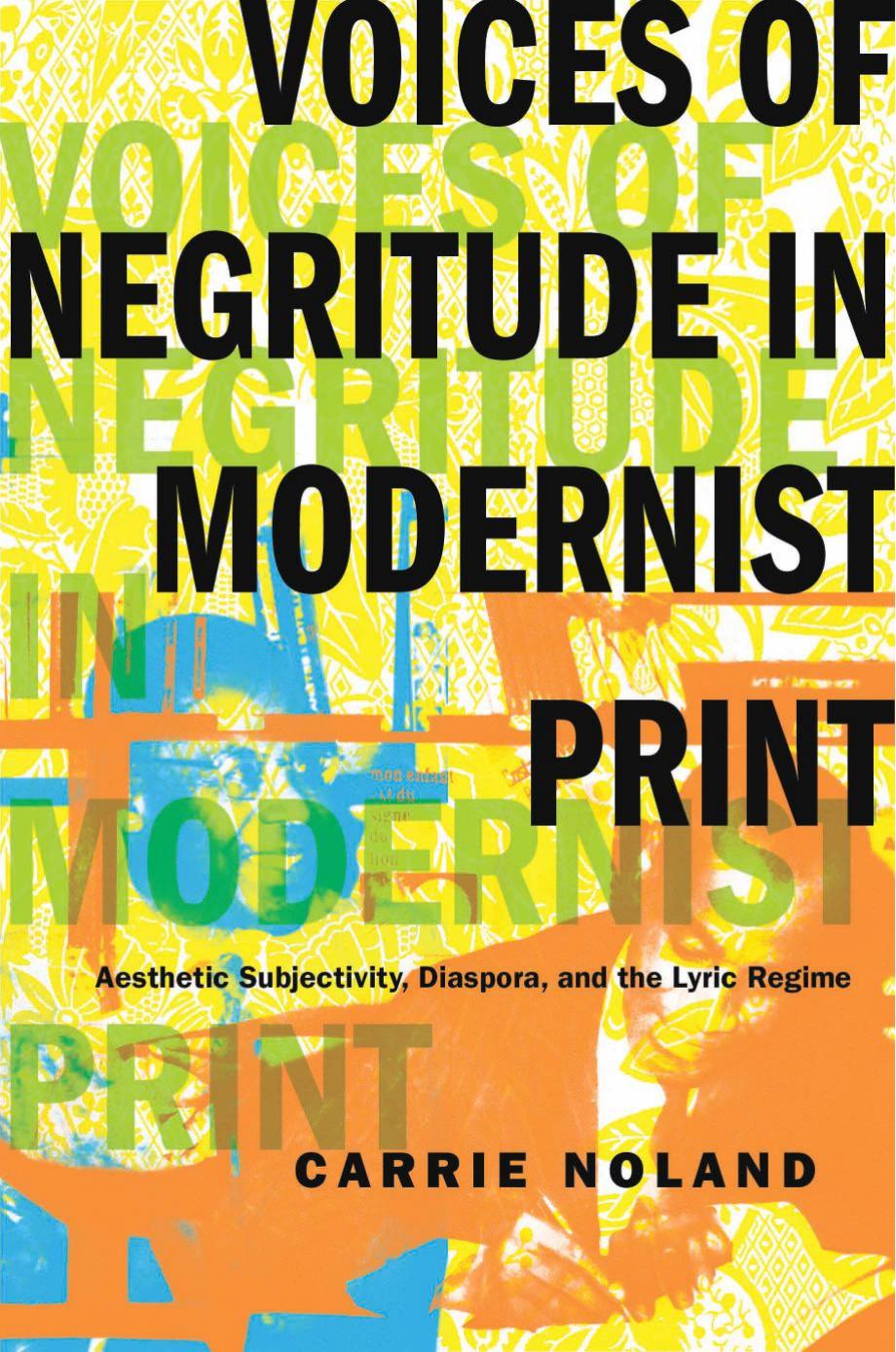Voices of Negritude in Modernist Print by Noland Carrie

Author:Noland, Carrie
Language: eng
Format: epub, pdf
Tags: LCO007000, Literary Collections/Caribbean & Latin American, LIT006000, Literary Criticism/Semiotics & Theory
Publisher: Columbia University Press
Published: 2015-02-09T16:00:00+00:00
“THE PASSING OF THE SUBJECT INTO LANGUAGE”
Although Damas once claimed that his poems “can be danced, they can be sung,” it is hard to see how the lines of “Fragment” suggest a musical accompaniment or avatar. On the contrary, they seem to be intentionally composed to ambiguate their rhythmic vocalization. This does not mean that the poem lacks a rhythm, only that we might want to pause a moment before associating that rhythm with the “rythme naturel du tam-tam” (Senghor). Bridget Jones has discerned a Creole-like “duple time with frequent syncopation” in several of his poems;72 Keith Warner has identified calypso and jazz patterns in his verse structures; and Barthélémy Kotchy has unearthed the structure of popular songs and African polyrhythms in poems like “Obsession.”73 There is nothing to prove these critics wrong. But there are reasons to believe that the very rhythms these critics insist on identifying as “African” (or African-derived) actually belong to the rhetorical rhythm of French interwar poetry while their “linguistic rhythm” is that of Parisian French, not Guianese Creole. To proceed further in our analysis, and to clarify the rhythmic sources from which Damas drew, we need to refer to Meschonnic’s tripartite division of rhythm into three categories and inspect each one in turn.
In Damas’s case, the first category of rhythm, the “linguistic,” would pertain to the way French is spoken by an évolué born in French Guyana in the teens. The rhythms of such speech are not fully retrievable, of course, but we can lean on the evidence we have. A recording Damas made of his own poems in 1967, titled Poésie de la Négritude: Léon Damas Reads Selected Poems from “Pigments, Graffiti, Black Label, and Névralgies,” suggests just how little his French pronunciation was inflected by the Creole of Cayenne (or the Creole of Fort-de-France, where he spent two high school years). Granted, the recording in the Smithsonian Folkways series supervised by Zora Neale Hurston is a highly artificial affair, made for posterity and thus not an ideal example of either his casual rhythms of speech or even his dramatic mode of delivery in person.74 Yet we can get a sense of how Damas thought his poems should be recited, how he interpreted the rhythms he himself had written down. On the Folkways Smithsonian recording Damas pronounces each word deliberately, often exaggerating the segmentation of syllables in a staccato manner. His overall style of enunciation is that of the university professor, or official délégué. Similarly, Senghor’s reading style on his own recording, Les grandes voix du sud, is largely independent of musical rhythms; the kôra playing in the background while Senghor recites his poems only underscores how spoken (rather than sung) they are. In fact, the speaking voices of Senghor and Damas both evoke the writtenness of the texts they are reading (even if recited by heart).75 Both are extremely careful to enunciate cleanly each and every consonant, to distinguish each and every vowel, and to avoid elongating a syllable even when stressed.
Download
Voices of Negritude in Modernist Print by Noland Carrie.pdf
This site does not store any files on its server. We only index and link to content provided by other sites. Please contact the content providers to delete copyright contents if any and email us, we'll remove relevant links or contents immediately.
| African | Asian |
| Australian & Oceanian | Canadian |
| Caribbean & Latin American | European |
| Jewish | Middle Eastern |
| Russian | United States |
4 3 2 1: A Novel by Paul Auster(12283)
The handmaid's tale by Margaret Atwood(7679)
Giovanni's Room by James Baldwin(7191)
Asking the Right Questions: A Guide to Critical Thinking by M. Neil Browne & Stuart M. Keeley(5633)
Big Magic: Creative Living Beyond Fear by Elizabeth Gilbert(5610)
Ego Is the Enemy by Ryan Holiday(5294)
The Body: A Guide for Occupants by Bill Bryson(4974)
On Writing A Memoir of the Craft by Stephen King(4863)
Ken Follett - World without end by Ken Follett(4645)
Adulting by Kelly Williams Brown(4487)
Bluets by Maggie Nelson(4473)
Eat That Frog! by Brian Tracy(4435)
Guilty Pleasures by Laurell K Hamilton(4360)
The Poetry of Pablo Neruda by Pablo Neruda(4039)
Alive: The Story of the Andes Survivors by Piers Paul Read(3968)
White Noise - A Novel by Don DeLillo(3954)
Fingerprints of the Gods by Graham Hancock(3940)
The Book of Joy by Dalai Lama(3899)
The Bookshop by Penelope Fitzgerald(3775)
